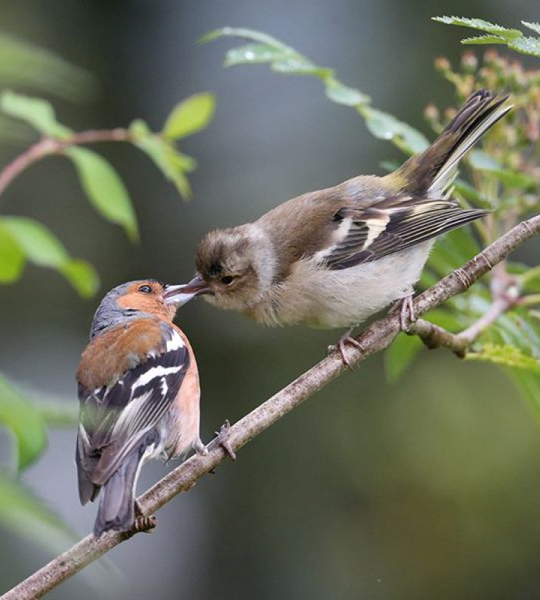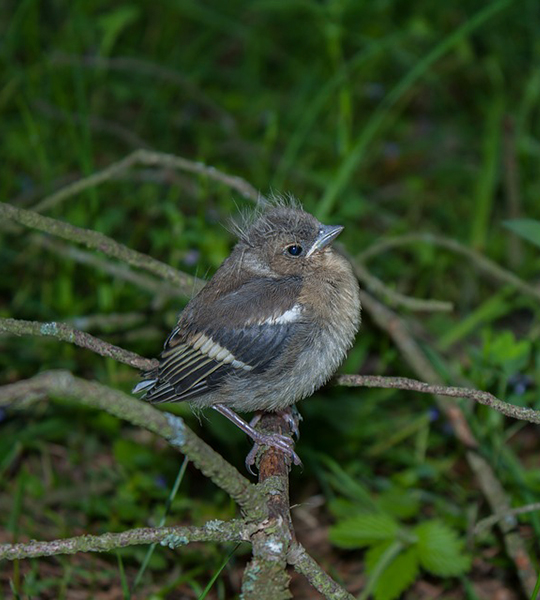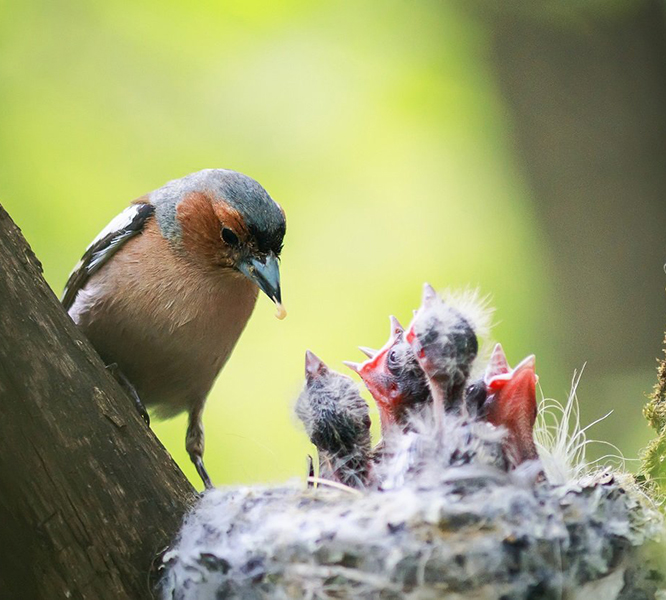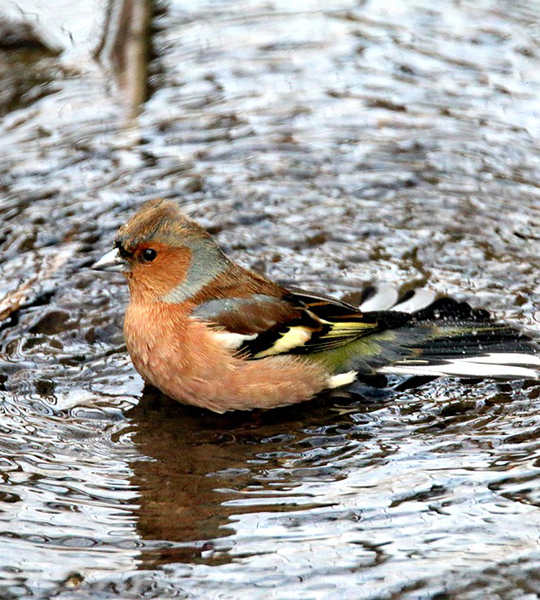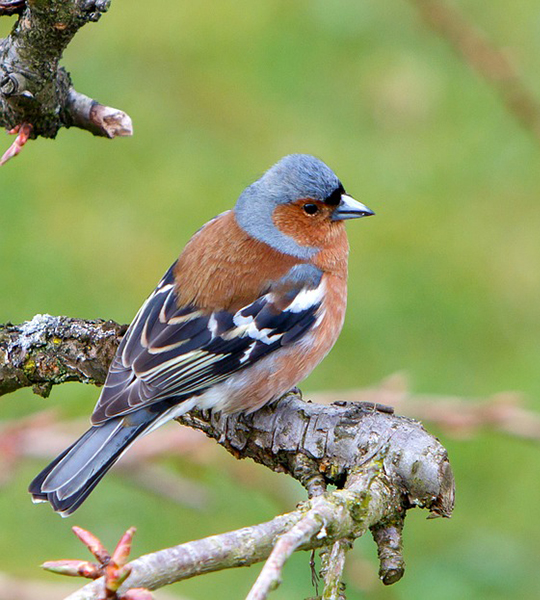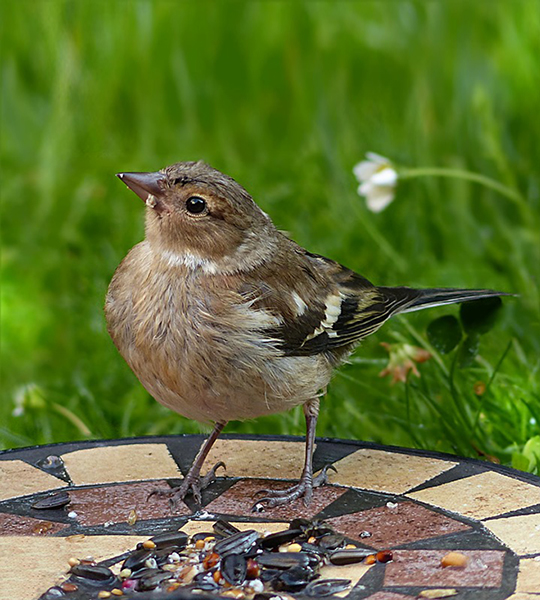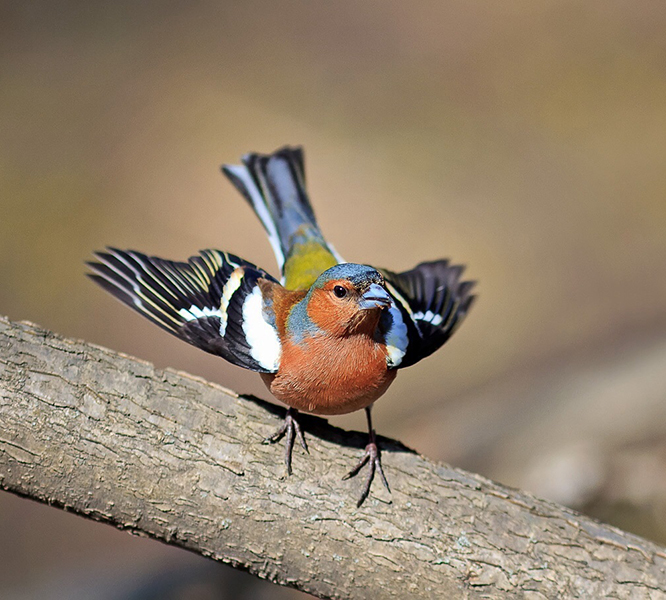In forests and city parks you can often find small, sparrow-sized birds with multi-color plumage. These are finches, their population is considered one of the largest in our country. They attract attention not only with color, but also with singing. And, probably, many want to know more about them. In this article you will find a detailed description of the species and find out if the migratory bird is a finch or not.
Material Content:
Common Finch - bird species description
Finches (Fringilla coelebs) are singing migratory birds, representatives of a large family of finch. The body sizes of individuals are small, about 14 cm, the wingspan is from 24.5 to 28.5 cm. They weigh on average 15-40 g.
You can recognize these birds by the blue-gray “hat” on their heads and large white spots on their wings. The back is decorated with green and brown feathers, and on the chest they are red-brown. Goiter is also painted in the same color. However, only males are so bright, especially in the spring. Finches of females look much more modest.
Small birds feed on grass, leaves of trees and shrubs, green parts of other plants, seeds. In the summer they eat insects, invertebrates, they also feed offspring.
Finches begin to nest in early May. As a building material, grass, twigs and moss are used. One clutch consists of 4 to 7 eggs, painted in a pale green color with a reddish or bluish tint and covered with violet-pink dots. Hatching and feeding offspring takes up to 14 days. Often during the mating season, the female manages to make 2 clutches. The second breeding occurs in the period from June to August.
Male birds are polygamous. Mating with one female, they can fertilize others in the same season.But in the upbringing, feeding and protection of the chicks, males take an active part, even if it is the offspring of another male.
In the wild, representatives of this species live for about 2 years, and in captivity their life expectancy is significantly increased and can reach up to 12 years.
Habitat and habitat
Little songbirds can be found not only in Russia. They inhabit Europe, in its western part there are from 79 to 94 million pairs. They live in western Asia and northern Africa. For living coniferous and deciduous forests, artificial plantings, parks are chosen. Often settle in the immediate vicinity of human habitation, in gardens and kitchen gardens. However, during the mating season they move to less lively places, finches nests equip away from people.
In September or the first half of October, the flock is removed from the place - the seasonal migration of birds begins. Mostly they fly away to the Mediterranean, developed magnetoreception (a feeling that allows you to feel magnetic fields and determine the direction of movement) helps individuals to travel long distances, accurately guessing the route. And the populations living in the Urals or in the western part of Siberia are moving to Central Asia and the southern regions of Kazakhstan. As well, the finch hibernates in Central Europe and the Ciscaucasia. Birds return in the first days of April.
Female and male finch - what is the difference
To distinguish a female from a male is quite simple, it is enough to consider the color. The males are bright, with multi-color plumage - there are black, greenish, blue, white, reddish and brown tones.
Females have gray-brown feathers on the chest and pale brown on the back, the head is brownish-brown. Chicks are born in the same way, only on the back of the head there is a bright spot that disappears with time.
It is the females that are so often confused with sparrows because of the similarity of colors. But there is one characteristic inherent in the finches of both sexes - a cone-shaped beak, painted in a bluish tint.
Chaffinch singing
Among the birds of this species, only males are “vocalized”. The song of the finch consists of three parts, successively replacing each other - tune, trill and stroke. First, subtle whistling sounds are heard, then directly the trill, and then the stroke - short and sharp. The song lasts a few seconds and is repeated after a short break. Compositions can change, and in the "repertoire" of one individual there are up to 6-10 of them.
But such vocal data is inherent only to adult, sexually mature males. There is an assumption that this ability develops under the influence of testosterone - the male sex hormone. Young males, as well as females, make sounds similar to “hiut, hiut”. Later, males acquire singing skills, imitating the senior members of the pack, as well as in the process of “mutual learning”. Gathering in groups, they perform several variations of compositions, and on average these birds have about 20 species songs.
Ornithologists have found that the finch language includes a number of signals that they give voice. For example, “tyup” means a readiness for take-off, “buze” means aggressiveness, “these” means a warning about danger. And these entertaining birds designate courtship with several combinations of sounds - “ksip”, “chirp”, “siip”.


